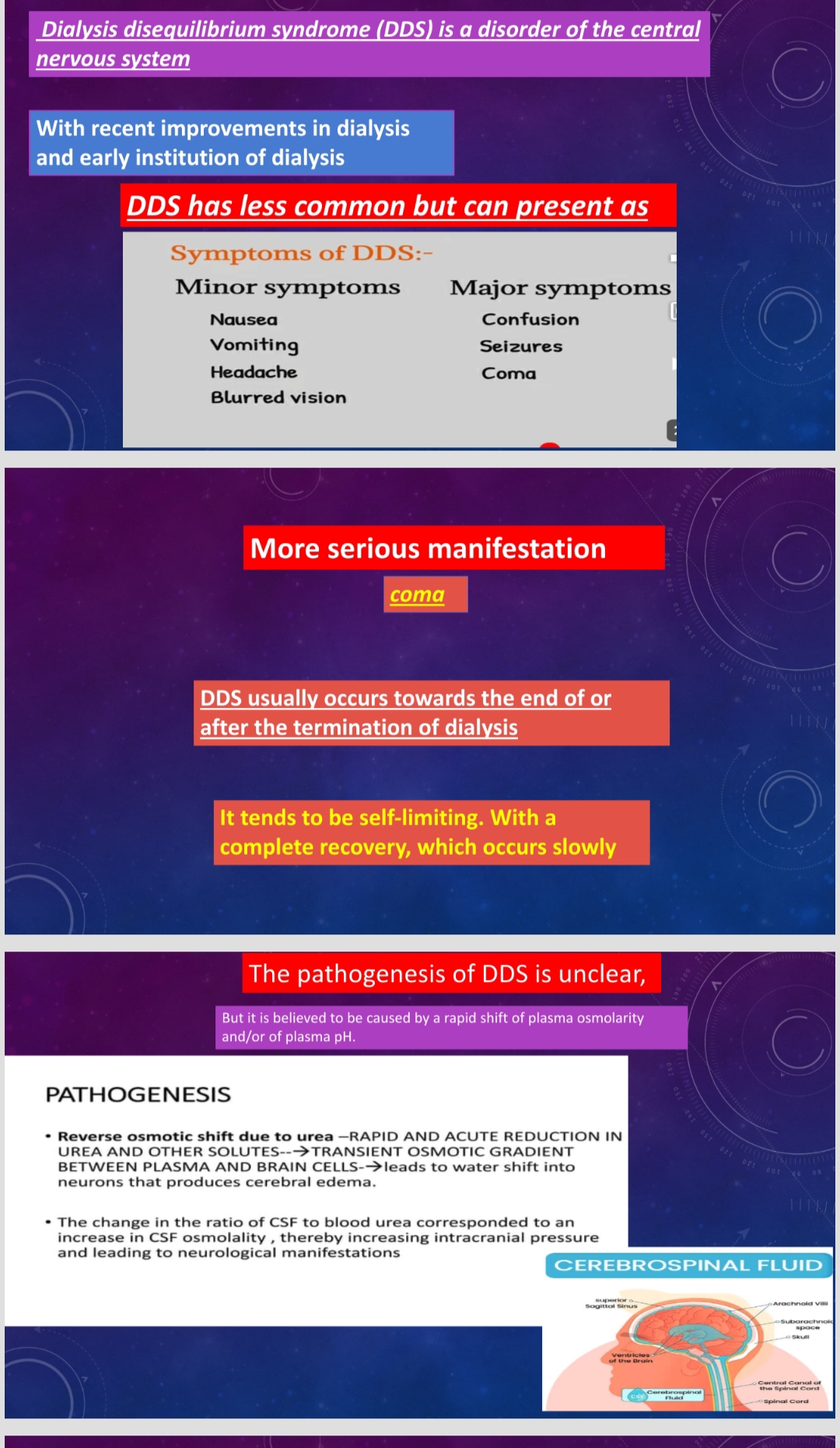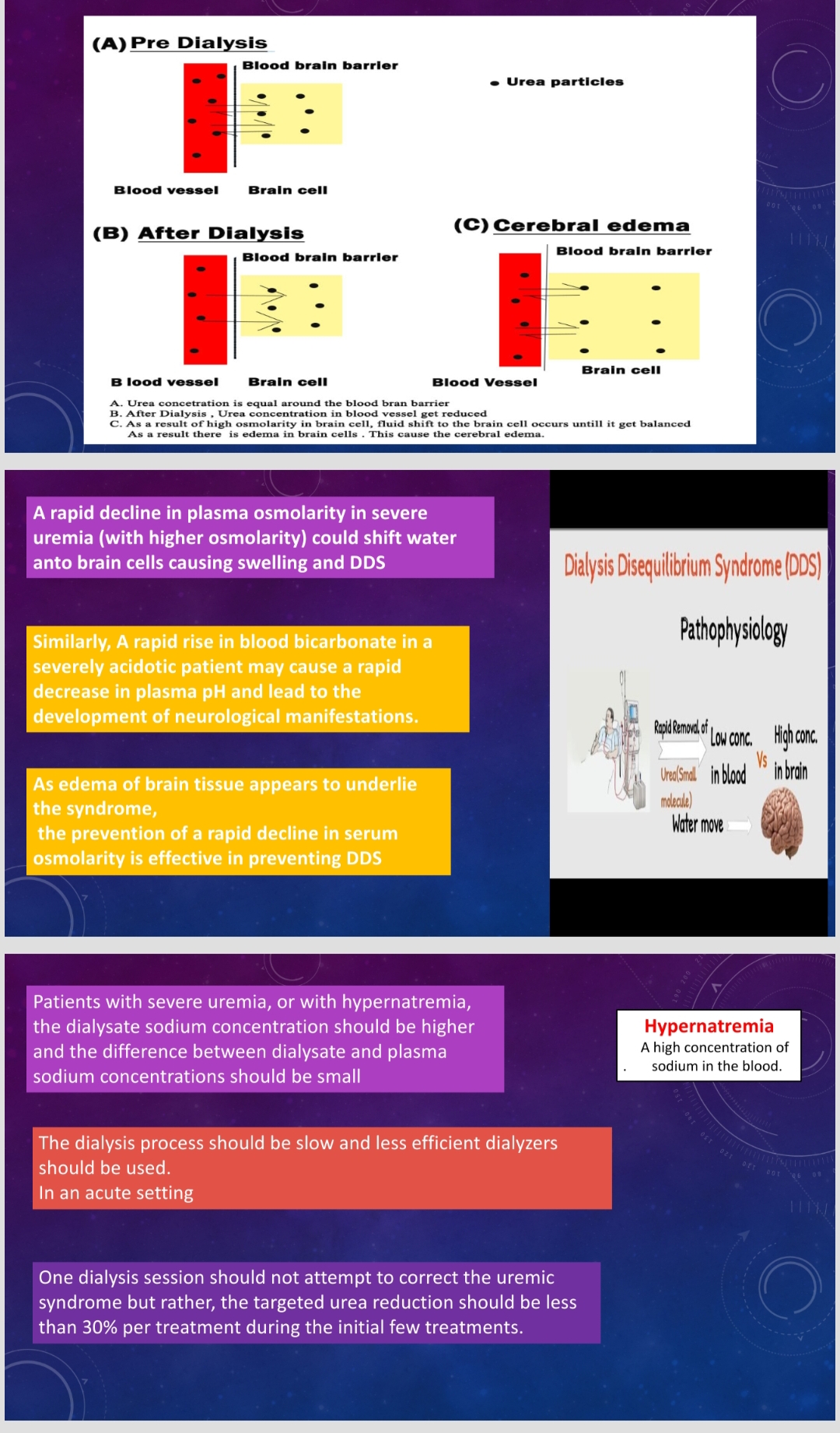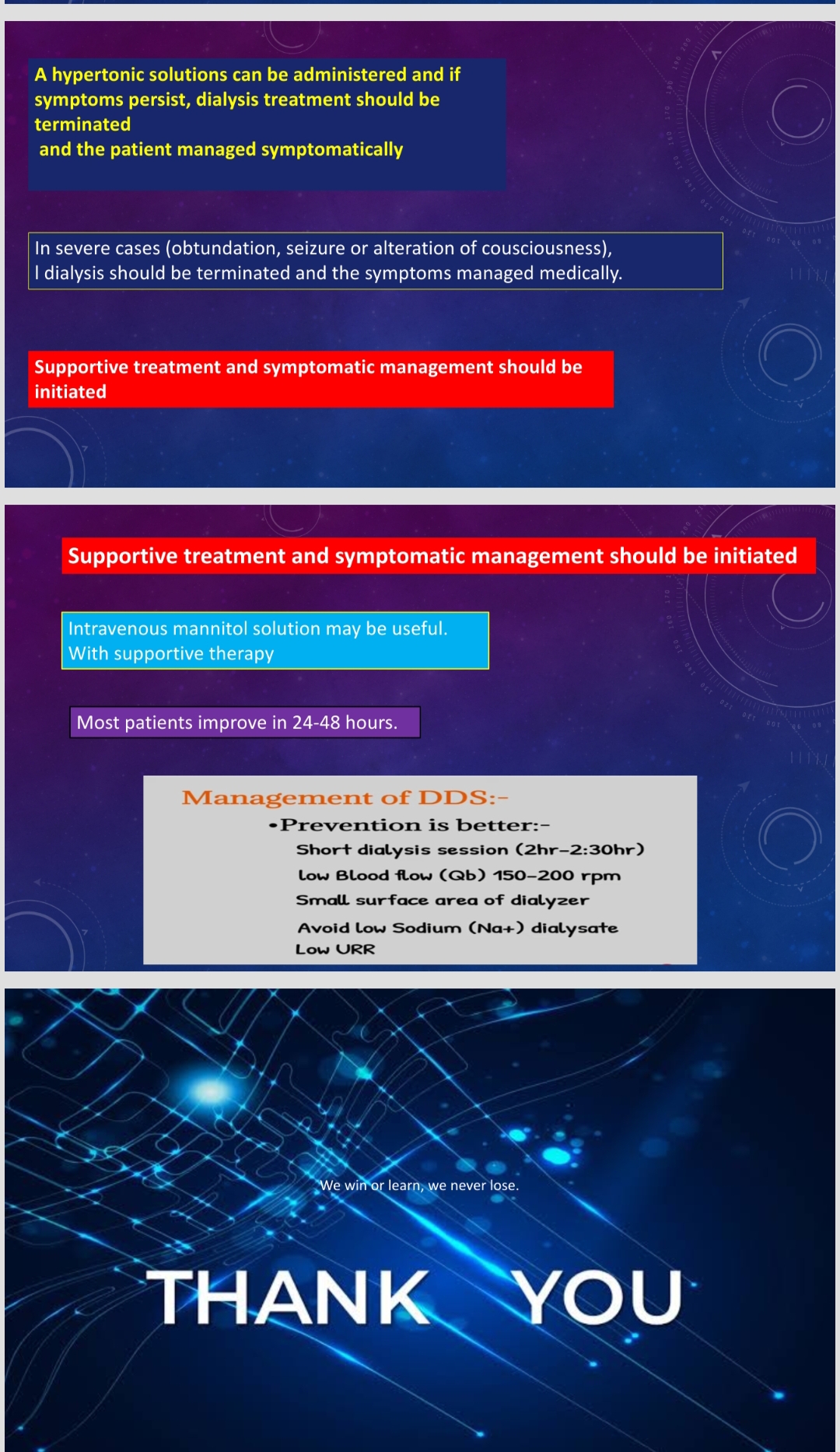What is DDS ppt
Dialysis Disequlibrium SyndromeDialysis disequilibrium syndrome (DDS) is a disorder of the central nervous system With recent improvements in dialysis and early institution of dialysis, DD.S has become less common bul can present as nausea, vomiting, headache, restlessness, vision disturbances, disorientation and tremors. More serious manifestations include seizures, obtundation, and coma. DDS usu ally occurs towards the end of or after the termination of dialysis. It tends to be self-limiting. with a complete recovery, which occurs slowly.The pathogenesis of DDS is unclear, but it is believed to be caused by a rapid shift of plasma osmolarity and/or of plasma pH. A rapid decline in plasma osmolarity in severe uremia (with higher osmolarity) could shift water anto brain cells causing swelling and DDS. Similarly, A rapid rise in blood bicarbonate in a severely acidotic patient may cause a rapid decrease in plas ma pH and lead to the development of neurological manifestations.As edema of brain tissue appears to underlie the syndrome, the prevention of a rapid decline in serum osmolarity is effective in preventing DDS. Thus, in patients with severe uremia, or with hypernatremia, the dialysate sodium concentration should be higher and the difference between dialysate and plasma sodium concentrations should be small. The dialysis process should be slow and less efficient dialyzers should be used. In an acute setting, one dialysis session should not attempt to correct the uremic syndrome but rather, the targeted urea reduction should be less than 30% per treatment during the initial few treatments. Some advocate the use of concurrent dialysate flow to slow the dialytic process in severely uremic patients who are starting dialysis Intravenous mannitol solution and the addition of urea to the dialysate have also been used. In severely acidotic patients, dialysate bicarbonate should be reduced for initial dialysis treatments. Mild symptoms of DDS (nausea vomiting and headache) are common and are difficult to assign specifically to this syndrome Treatment is symptomatic and discussed above. If DDS is suspected, reducing blood flow and reducing the UFR slows the dialysis process. Hypertonicsolutions can be administered and if symptoms persist, dialysis treatment should be terminated and the patient managed symptomaticallyIn severe cases (obtundation, seizure or alteration of cousciousness), dialysis should be termi nated and the symptoms managed medically. Supportive treatment and symptomatic manage- ment should be initiated Intravenous mannitol solution may be useful. With supportive therapy, most patients improve in 24-48 hours.

Dds ppt by photos . full vdo on my YouTube
| dialysis disequilibrium syndrome diagram as k pic on ppt | |
| Dds in dialysis Management sing & Symptoms Prevention treatment ….. more. |


https://www.youtube.com/@lifeofway.Rizwan
https://www.youtube.com/@lifeofway.Rizwan




